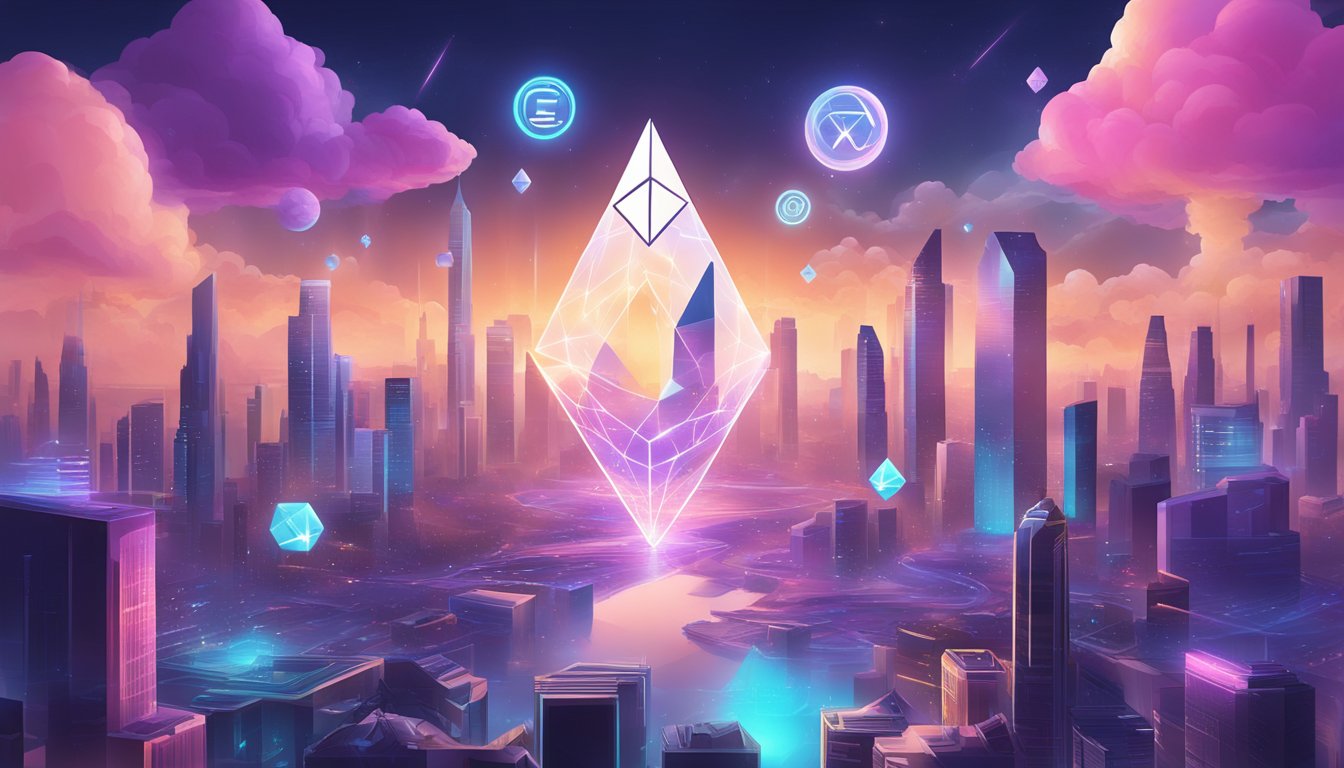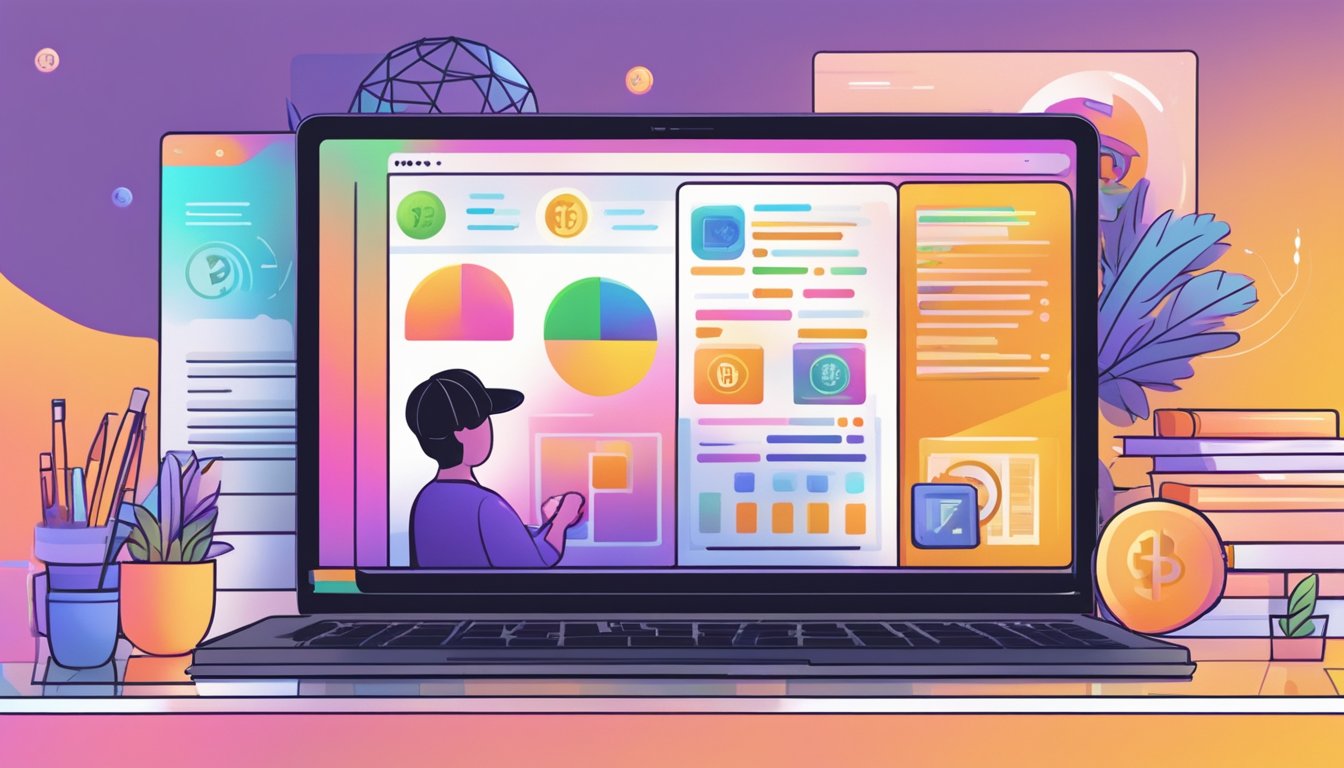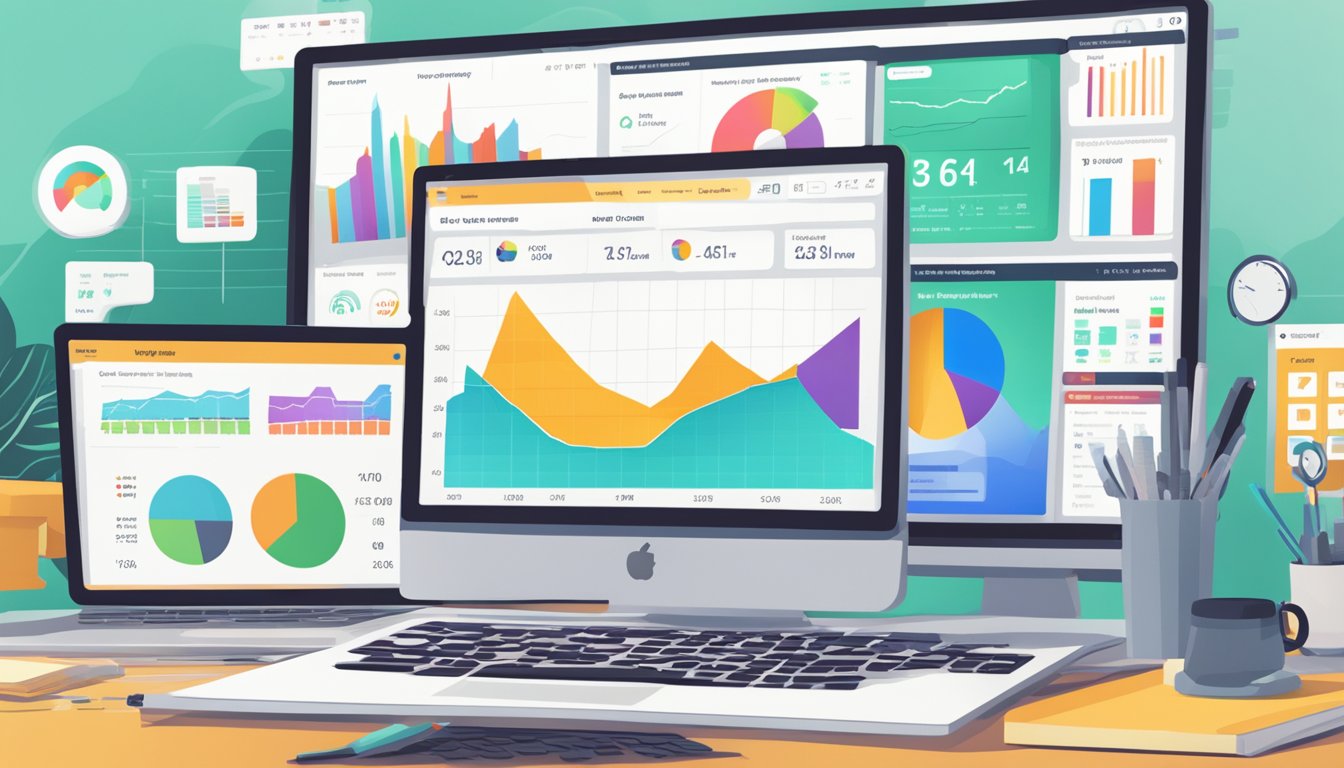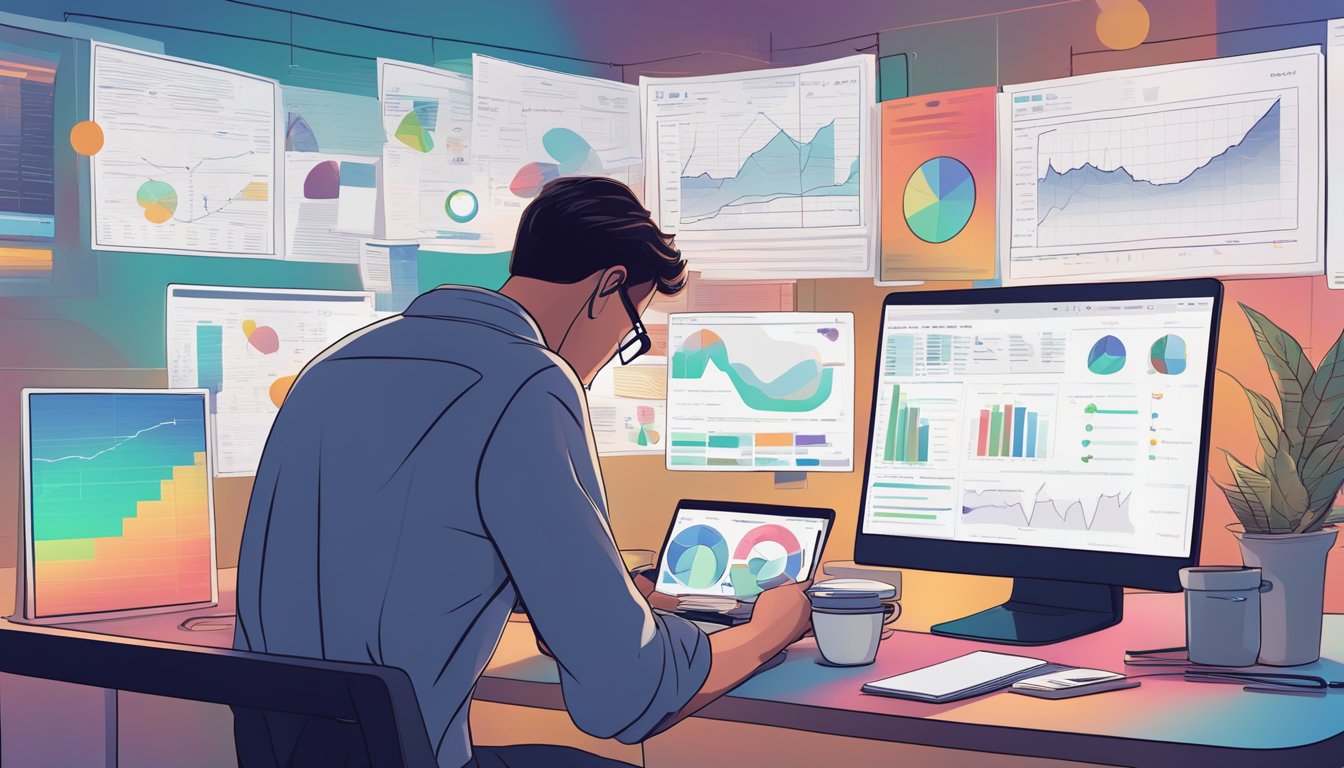Are you curious about NFTs and how they relate to investment? Non-fungible tokens (NFTs) have been making headlines recently, and for good reason. NFTs are unique digital assets using blockchain technology to verify ownership and authenticity. This makes them a popular choice for collectors and investors alike.

If you’re new to the world of NFTs, you might be wondering what all the fuss is about. NFTs have been making waves in art, selling some pieces for millions of pounds.
But NFTs aren’t just limited to the art world. They can represent anything from music to video games to tweets. The potential uses for NFTs are almost endless.
So, what does this mean for investment? Investing in NFTs can be lucrative for those willing to take the risk. However, it’s essential to understand the market and do your research before diving in.
This article will look closely at NFTs and how they relate to investment. We’ll cover everything from what NFTs are to how to invest in them so you can decide whether NFTs are right for you.
1-Min Read: NFTs Demystified
Curious about NFTs but feeling a bit lost? You’re not alone! NFTs, or Non-Fungible Tokens, are making waves in the digital world, and Singaporeans are right to be interested. Here’s a quick breakdown to get you started:
- Imagine a digital certificate of authenticity. That’s essentially what an NFT is. It proves you own a unique digital asset, like a piece of artwork, a song, or even a historic tweet! It’s like owning the one and only digital Mona Lisa.
- Unlike money (where every dollar is the same), NFTs are one-of-a-kind. You can’t replace them, making them valuable for creators and collectors. Creators can finally claim ownership of their digital work, while collectors can possess exclusive pieces.
- NFTs are shaking things up! From the art world and gaming to real estate, NFTs are changing how we value and own digital assets.
Intrigued? There’s more to discover!
Here are some reasons why NFTs are particularly interesting for Singapore:
- Singapore’s thriving tech scene: Being a tech hub, Singapore is well-positioned to be a leader in the NFT space. This means exciting opportunities for creators, investors, and collectors alike.
- Government support for innovation: Singapore’s government is actively exploring the potential of blockchain technology, which underpins NFTs. This supportive environment could lead to a booming NFT ecosystem.
- Investment potential: NFTs are a new asset class with the potential for high returns. Understanding NFTs could open doors to lucrative investment opportunities.
Ready to dive deeper? Stay tuned as we explore the exciting world of NFTs in Singapore! We’ll uncover investment strategies, navigate the legalities, and unveil the future of this digital phenomenon.
Understanding NFTs

If you’re interested in investing, you’ve probably heard of NFTs. But what exactly are they? In this section, we’ll define NFTs, explore the blockchain technology behind them, and distinguish between fungible and non-fungible assets.
Defining Non-Fungible Tokens
NFTs, or non-fungible tokens, are unique digital assets representing ownership of a specific item or content, such as artwork, music, or tweets. Unlike fungible assets, such as cryptocurrencies, each NFT is one-of-a-kind and cannot be exchanged for another NFT on a one-to-one basis. NFTs are stored on a blockchain, which is a decentralised digital ledger that records transactions and ownership.
The Blockchain Technology Behind NFTs
The blockchain technology that underpins NFTs makes them valuable and secure. Each NFT is assigned a unique digital signature that is recorded on the blockchain, making it impossible to duplicate or counterfeit. This means that the ownership of an NFT is verifiable and cannot be disputed.
Fungible vs Non-Fungible Assets
Fungible assets like cryptocurrencies are interchangeable and have the same value. For example, one Bitcoin is worth the same as another Bitcoin. Non-fungible assets, on the other hand, are unique and have different values. For example, a painting by a famous artist is worth more than a painting by an unknown artist, even if they are the same size and have the same materials.
In summary, NFTs are unique digital assets representing ownership of a specific item or content. They are stored on a decentralised digital ledger blockchain that records transactions and ownership. Unlike fungible assets, each NFT is one-of-a-kind and cannot be exchanged for another NFT on a one-to-one basis. This makes them precious and secure, an exciting investment opportunity.
The World of NFTs and Ethereum

If you’re interested in non-fungible tokens (NFTs), you’ve probably heard of Ethereum. Ethereum is one of the world’s most popular blockchains, and it’s a great place to start if you’re interested in NFTs. Currently ranked second in market cap among all the world’s cryptocurrencies, Ethereum has only grown more popular since its launch in 2013.
Ethereum’s Role in NFT Development
Ethereum is the blockchain of choice for NFTs because it supports smart contracts. These smart contracts are the backbone of NFTs, as they allow for the creation and execution of unique digital assets. Ethereum’s smart contracts are also open-source, meaning developers can build on them to create new and innovative NFTs.
Smart Contracts and Ownership
Smart contracts are self-executing contracts with the terms of the agreement between buyer and seller being directly written into lines of code. This allows for the automatic transfer of ownership when certain conditions are met. In the case of NFTs, smart contracts ensure that the ownership of the digital asset is recorded on the Ethereum blockchain and cannot be duplicated or altered.
Ether and Gas Fees
To use Ethereum and its smart contracts, you must pay for Ether (ETH) transactions. Ether is the cryptocurrency that powers the Ethereum blockchain. Gas fees are those paid to miners to process transactions on the Ethereum blockchain. The cost of gas fees varies depending on network usage and can be pretty high during times of high traffic.
Overall, Ethereum’s smart contracts and ability to support NFTs have made it a popular choice for creators and investors. With its open-source nature and growing community, Ethereum is poised to continue leading the way in the world of NFTs.
Investing in NFTs

If you’re interested in investing in NFTs, you’re not alone. NFTs have become increasingly popular in recent years and have been making headlines due to their high value sales. Here’s everything you need to know about investing in NFTs.
Why Invest in NFTs?
One of the biggest reasons to invest in NFTs is the potential for high returns. NFTs can be sold for large sums; some have even sold for millions of pounds. Additionally, NFTs can provide a unique investment opportunity, allowing investors to own a piece of digital art or other digital assets.
Another reason to invest in NFTs is their growth potential. As the market for NFTs expands, the value of these assets may continue to rise. Investing in NFTs now could lead to significant returns in the future.
Risks of NFT Investments
As with any investment, there are risks associated with investing in NFTs. One of the most significant risks is the potential for fraud. Because NFTs are a relatively new investment, there is a risk of scams and other fraudulent activities. Investors should take steps to ensure that the NFTs they are investing in are legitimate and authentic.
Another risk of investing in NFTs is the potential for volatility. The value of NFTs can fluctuate rapidly, and investors may experience significant losses if they invest in NFTs that decrease in value.
Evaluating NFT Value and Authenticity
When investing in NFTs, evaluating the value and authenticity of the assets you’re investing in is essential. One way to do this is to research the artist or creator of the NFT. NFTs created by well-known artists or creators may be more valuable than those made by unknown artists.
Additionally, investors should look for NFTs verified and authenticated by reputable third-party services. This can help ensure that the NFT is legitimate and authentic.
Overall, investing in NFTs can be a unique and exciting opportunity for investors. However, it’s essential to understand the risks associated with this investment and to take steps to ensure that you’re investing in legitimate and authentic NFTs.
NFT Marketplaces and Trading

If you’re interested in buying or selling NFTs, several popular NFT platforms are available. These marketplaces allow artists and collectors to buy, sell, and trade NFTs easily and securely. Here are some of the most popular NFT marketplaces you can check out:
Popular NFT Platforms
OpenSea
OpenSea is one of the most popular NFT marketplaces. It’s a peer-to-peer platform that allows users to buy, sell, and discover NFTs. OpenSea has a wide range of NFTs, from digital art to collectables and games. The platform also allows users to create their NFTs.
Nifty Gateway
Nifty Gateway is another popular NFT marketplace. It’s a curated platform that only features high-quality NFTs from well-known artists and brands. Nifty Gateway also has a user-friendly interface, making it easy for beginners to buy and sell NFTs.
Buying and Selling NFTs
Buying and selling NFTs is similar to buying and selling traditional assets. However, there are some key differences to keep in mind. When you buy an NFT, you’re not buying the actual artwork or collectable. Instead, you’re purchasing a digital token representing asset ownership.
When you sell an NFT, you’ll need to list it on an NFT marketplace. You’ll need to set a price for your NFT; buyers can bid on it or purchase it outright. Once the NFT is sold, the transaction is recorded on the blockchain, ensuring that asset ownership is transferred to the buyer.
Understanding NFT Transactions
NFT transactions are recorded on the blockchain, a decentralised ledger that records all transactions. When you buy or sell an NFT, the blockchain network verifies the transaction. This ensures that the transaction is secure and transparent.
NFT transactions also involve gas fees, which are fees paid to miners to process the transaction on the blockchain. Gas fees can vary depending on network congestion and other factors. It’s important to keep these fees in mind when buying or selling NFTs.
Overall, NFT marketplaces offer a unique opportunity for artists and collectors to buy, sell, and trade digital assets. With the rise of blockchain technology, NFTs are becoming more popular and mainstream. If you’re interested in investing in NFTs, be sure to do your research and choose a reputable marketplace to buy and sell on.
Tip: Invest What You Can Afford
The NFT market can be unpredictable, with prices fluctuating rapidly. Only invest what you’re comfortable potentially losing.
Start small and gradually build a diversified portfolio across different NFT projects and categories. This helps spread your risk and increases your chances of success.
NFTs Beyond Digital Art

NFTs have gained immense popularity in digital art, but their potential goes beyond that. Here are some exciting ways NFTs are being used:
NFTs in Gaming and Collectibles
NFTs are being used in the gaming industry to create unique in-game items that players can own and trade. These items can range from weapons and armour to virtual real estate. With NFTs, players can have actual ownership of their digital assets and their value can be appreciated over time.
Collectables are another area where NFTs are being used. These can include anything from sports memorabilia to rare coins. NFTs allow the creation of unique, one-of-a-kind collectables that can be authenticated and traded securely.
Event Tickets and Exclusive Experiences
NFTs are also being used to create exclusive event tickets and experiences. For example, an NFT could grant you VIP access to a concert or a meet-and-greet with a celebrity. These NFTs can be traded on secondary markets, allowing fans who missed out on the initial sale to have still a chance to attend.
The Future of NFTs in Various Industries
NFTs can potentially disrupt many industries beyond art, gaming, and collectables. For example, NFTs could be used to create secure digital identities, allowing for more secure transactions and data storage. They could also be used to create unique, one-of-a-kind products in industries such as fashion and jewellery.
NFTs can potentially revolutionise how we think about ownership and value in the digital world. With their ability to create unique, one-of-a-kind assets, NFTs are opening up new possibilities for creators and collectors alike.
The Cultural Impact of NFTs

NFTs have taken the art world by storm and created a cultural phenomenon that has left many confused and curious. In this section, we will explore the cultural impact of NFTs and how they have changed how we view art and ownership.
NFTs and Artists
NFTs have opened up a new avenue for artists to showcase their work and make a profit. By creating unique digital assets verified on the blockchain, artists can sell their work directly to collectors without intermediaries. This has given artists more control over their work and has allowed them to bypass the traditional gatekeepers of the art world.
One of the most well-known artists who embraced NFTs is Beeple. His digital artwork “Everyday: The First 5000 Days” sold for $69 million at a Christie’s auction. This sale not only put Beeple on the map but also showed a high demand for digital art.
Iconic NFT Sales and Auctions
The sale of Beeple’s artwork is just one example of the iconic NFT sales and auctions that have taken place in recent years. From Jack Dorsey’s first tweet to virtual real estate, NFTs have been used to sell various unique digital assets.
These sales have created a new market for digital assets and sparked a conversation about the value of art and ownership. With NFTs, ownership is not just about having a physical object but about owning a piece of history and culture.
Community and Social Phenomena
NFTs have also created a new social phenomenon, forming communities around specific digital assets. These communities comprise collectors, artists, and enthusiasts passionate about a particular NFT.
This has created a new way for people to connect and engage with art and culture. It has also created a new form of social currency, where owning a particular NFT can give you status within a community.
Overall, the cultural impact of NFTs has been significant. They have created a new market for digital art, challenged traditional notions of ownership, and created new social phenomena. As the world becomes more digital, it will be interesting to see how NFTs continue to shape our culture.
Technical Aspects of NFTs

If you’re interested in investing in NFTs, it’s essential to understand the technical aspects of this new technology. Here are some vital technical considerations to keep in mind:
Minting and Metadata
When an NFT is minted, it is assigned a unique identifier recorded on the blockchain. This identifier is what makes each NFT one-of-a-kind and gives it its value. In addition to the identifier, each NFT contains metadata describing the asset it represents. This metadata can include information such as the artist, the creation date, and the file type.
Blockchain Security and Authentication
One of the critical benefits of NFTs is that they are secured by blockchain technology, which provides high security and authentication. When an NFT is created, it is recorded on the blockchain, meaning it cannot be duplicated or tampered with. This makes NFTs an ideal way to authenticate ownership of digital assets.
NFT Storage and IP Rights
NFTs are stored on the blockchain, meaning they do not require a physical storage location. This makes them easy to store and access, as they can be accessed anywhere. However, it is essential to note that while owning an NFT gives you ownership of the digital asset it represents, it does not necessarily give you ownership of the underlying intellectual property rights. Understanding the terms of the NFT sale and any associated licensing agreements is essential before investing in an NFT.
Overall, NFTs represent an exciting new technology that has the potential to revolutionise the way we think about digital ownership and authentication. By understanding the technical aspects of NFTs, you can make informed decisions about investing in this emerging asset class.
Challenges and Considerations

Investing in NFTs can be an exciting opportunity to own unique digital assets and potentially make a profit. However, there are several challenges and considerations you should be aware of before diving in.
Environmental Concerns of NFTs
One of the major concerns surrounding NFTs is their impact on the environment. NFTs are created using blockchain technology, which requires significant electricity to operate. The energy consumption of NFTs has been compared to that of a small country, and the carbon footprint of NFTs is substantial. If you are environmentally conscious, you may want to consider the impact of NFTs before investing.
The Speculative Nature of NFTs
Another consideration is the speculative nature of NFTs. NFTs are a relatively new and untested market, and their value can be highly volatile. It’s important to remember that investing in NFTs is speculative and comes with a high degree of risk. Doing your research and only investing what you can afford to lose is essential.
Scams and Buyer Beware
Finally, there is the risk of scams and fraud in the NFT market. Due to the high value of some NFTs, there have been instances of scams and fraudulent activity. It’s essential to be cautious when investing in NFTs and only purchase from reputable sellers. Be wary of deals that seem too good to be accurate, and always do your due diligence before investing.
Investing in NFTs can be exciting, but it’s essential to be aware of the challenges and considerations before diving in. Keep in mind the environmental impact of NFTs, the speculative nature of the market, and the risk of scams and fraud. You can navigate the NFT market and potentially profit from this exciting new asset class with proper research and caution.
Frequently Asked Questions
How can one start investing in NFTs as a beginner?
If you’re a beginner to NFTs, the first step is to research and understand what NFTs are and how they work. Once you have a basic understanding, you can create a digital wallet and purchase cryptocurrency like Ethereum.
After that, you can browse and explore the various NFT marketplaces to find the right NFTs to invest in. But remember, investing in NFTs is still considered a high-risk investment, so you must do your due diligence and invest only what you can afford to lose.
What are the most exhilarating examples of NFT art?
NFT art is a rapidly growing industry, with new and exciting pieces being created every day. Some of the most exhilarating examples of NFT art include Beeple’s “The First 5000 Days,” which sold for a record-breaking $69 million at Christie’s auction house, and Grimes’ “WarNymph Collection,” which sold for nearly $6 million.
Other notable examples include Trevor Jones’ “Bitcoin Angel,” Krista Kim’s “Mars House,” and Pak’s “The Fungible.”
Which NFT marketplace is currently leading the digital frontier?
Several NFT marketplaces are available, each with its own features and offerings. However, the two most popular and widely used marketplaces are OpenSea and Nifty Gateway.
OpenSea is the largest NFT marketplace, offering a wide range of NFTs from various creators and artists. Nifty Gateway, on the other hand, focuses on limited edition drops from well-known artists and celebrities.
What’s the record for the most costly NFT ever sold?
The record for the most expensive NFT ever sold is held by Beeple’s “The First 5000 Days,” which sold for a staggering $69 million at Christie’s auction house. This sale was a significant milestone for the NFT industry, as it demonstrated the potential for digital art to be valued and sold at the same level as physical art.
Can you explain the buzz around NFTs and their operational mechanics?
The buzz around NFTs stems from their unique ability to represent ownership and authenticity of digital assets. NFTs are built on blockchain technology, which creates a unique, one-of-a-kind digital asset that cannot be replicated or duplicated.
This makes them highly valuable and sought after by collectors and investors. NFTs are created using smart contracts, self-executing contracts that automatically enforce the terms and conditions of the agreement between the buyer and the seller.
Is it truly a savvy move to pour one’s money into NFTs?
Investing in NFTs can be a high-risk, high-reward proposition. While some NFTs have sold for millions of dollars, others have failed to generate significant returns. Doing your research and investing only what you can afford to lose is essential.
NFTs are still relatively new and untested investment vehicles, so it’s essential to approach them with caution and a long-term investment strategy in mind.
NFT Glitch? QuickCredit‘s Got Your Back
The crypto world’s a wild ride! Did you land a sweet NFT deal that went south? Don’t sweat it!
QuickCredit Pte Ltd, Singapore’s go-to licensed money lender, is here to help. We offer quick and hassle-free personal loans to bridge any financial gap, keeping your flow smooth.
We know getting the cash you need fast is crucial. That’s why our streamlined application process makes it easy for borrowers across Singapore to access our top-notch personal loan services.
We’re here to help you overcome any financial hurdle and get back to achieving your goals. Click here to get started with QuickCredit Pte Ltd’s personal loan now!
